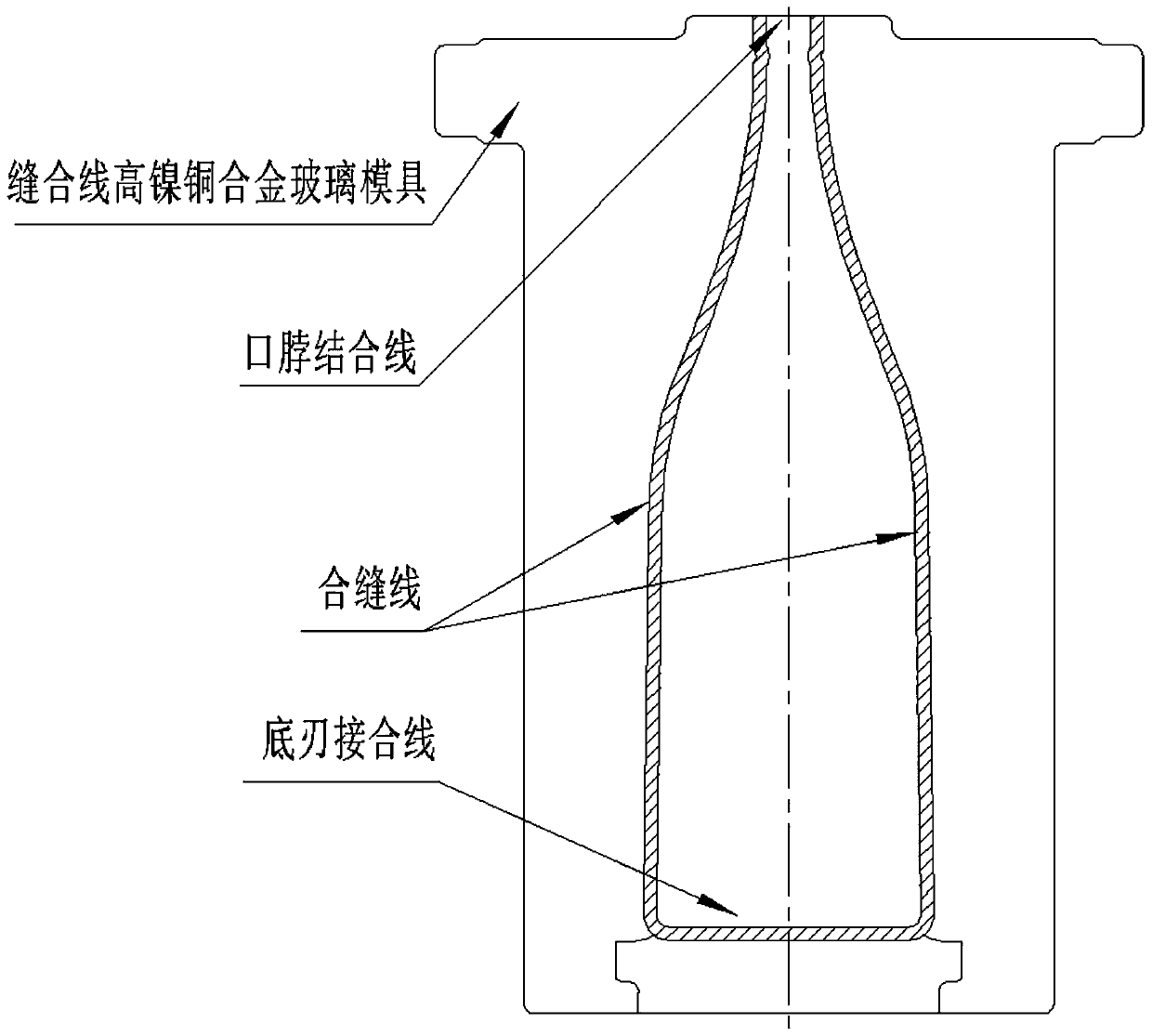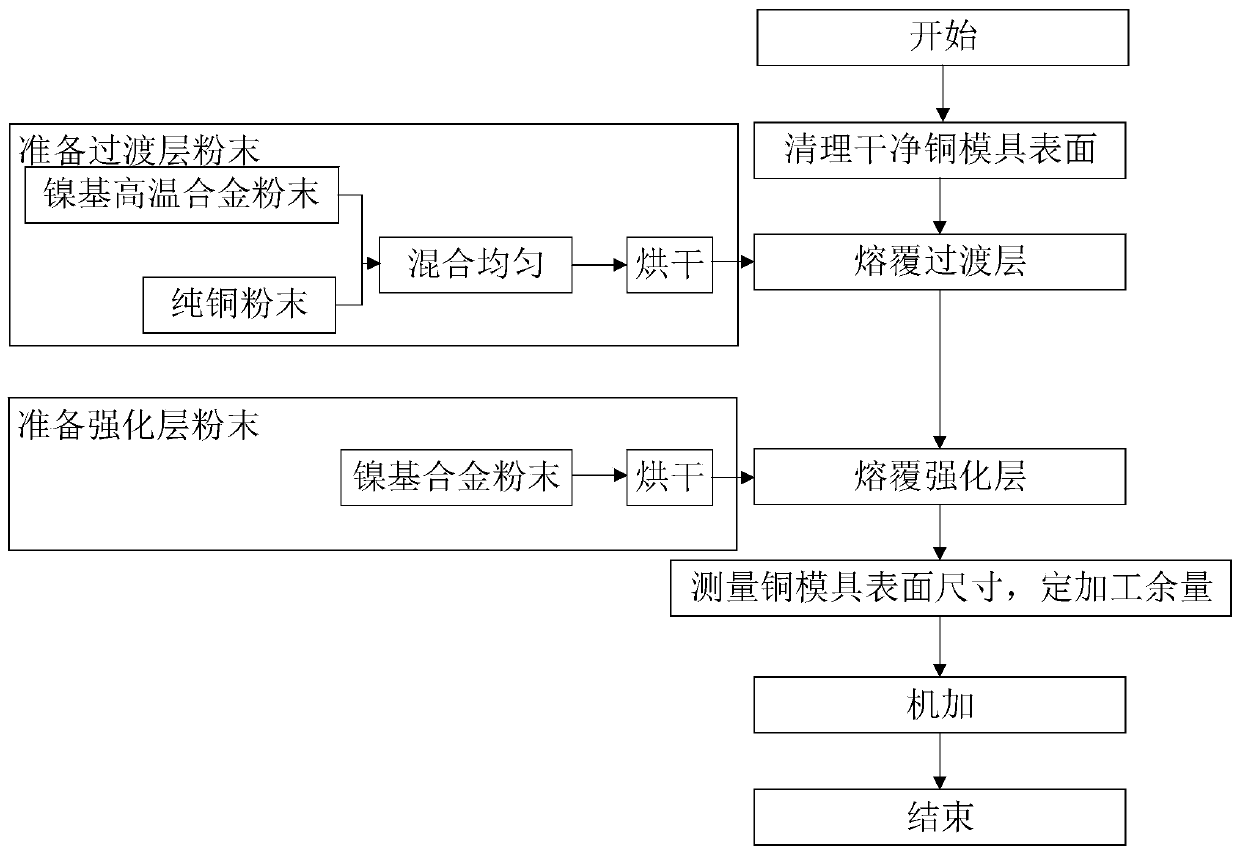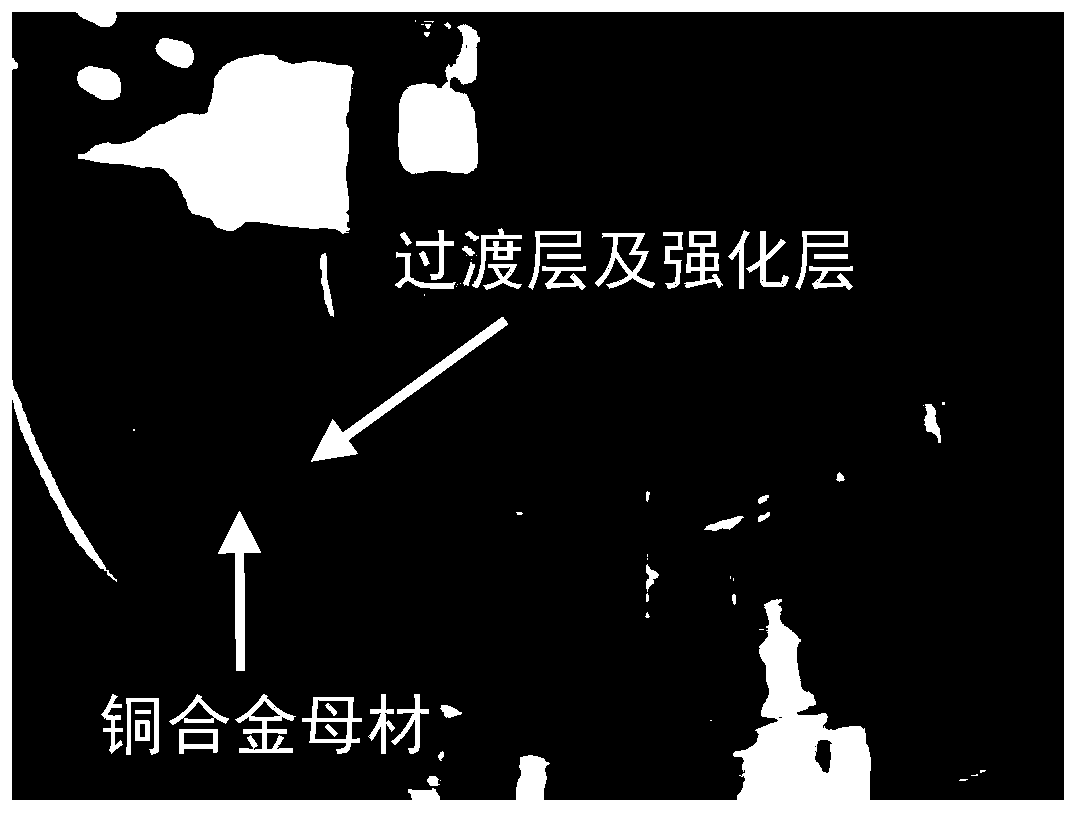High-nickel copper alloy glass mold strengthening method
A glass mold, copper alloy technology, applied in metal material coating process, coating and other directions, can solve the problems of reduced thermal conductivity, low bonding strength, large waste of welding materials, etc., to prevent welding cracks and copper alloys. Oxidation, the effect of reducing power loss
- Summary
- Abstract
- Description
- Claims
- Application Information
AI Technical Summary
Problems solved by technology
Method used
Image
Examples
Embodiment 1
[0045] A method for strengthening a high-nickel copper alloy glass mold, comprising the steps of:
[0046] S1, pre-treatment: clean the oxide and dirt on the surface of the copper mold;
[0047] S2. Preparation of transition layer powder: use nickel-based superalloy powder and pure copper powder with a weight ratio of 15% to 30% to mix evenly, and dry to obtain transition layer powder, and preferably the proportion of pure copper powder in the mixed powder is The weight ratio is 20%;
[0048] Strengthening layer powder preparation: use nickel-based alloy powder and dry it to obtain strengthening layer powder;
[0049]S3. Cladding the transition layer powder onto the copper mold, the cladding layer formed by cladding is a transition layer with a thickness of 0.5-2 mm, preferably the thickness of the transition layer is 1 mm, and the obtained transition layer has a hardness of HRC25 ~30;
[0050] S4. Cladding the strengthening layer powder onto the transition layer, the cladd...
Embodiment 2
[0066] This example is about the specific composition of the nickel-based superalloy powder and the nickel-based alloy powder in Example 1.
[0067] The nickel-based superalloy powder includes Cr, Ni, Mo, Al, Ti, Nb, Si, Cu and Fe, in terms of mass percentage, each component is: Cr: 17%-21%, Ni: 50%- 55%, Mo: 2.8%-3.3%, Al: 0.3%-0.7%, Ti: 0.75%-1.15%, Nb: 5%-5.5%, Si: 0.3%-0.4%, Cu: 0.2%-0.4% , the rest is Fe.
[0068] The nickel-based alloy powder includes Cr, Fe, Si, C and Ni. In terms of mass percentage, the components are: Cr: 14%-17%, Fe: 12%-15%, Si: 3%-4.5% %, C: 0.6%-1%, the rest is Ni.
Embodiment 3
[0070] This embodiment describes the relevant parameters in the cladding of the transition layer and the strengthening layer.
[0071] In the cladding of the transition layer:
[0072] Using semiconductor fiber coupled 4000W laser
[0073] The main cladding parameters are shown in Table 1:
[0074] Laser power (P) Spot size scanning speed Feeding volume Shielding gas flow road-to-road overlap 2100W φ2mm 10mm / s 7.6g / min 15~25L / min 50%
[0075] Table 1. Laser cladding process parameters of the transition layer
[0076] In the cladding of the strengthening layer:
[0077] Using semiconductor fiber coupled 4000W laser
[0078] The main cladding parameters are shown in Table 2:
[0079] Laser power (P) Spot size scanning speed Feeding volume Shielding gas flow road-to-road overlap 2300W φ2mm 15mm / s 8.5g / min 15~25L / min 50%
[0080] Table 2. Laser cladding process parameters of strengthening layer
PUM
| Property | Measurement | Unit |
|---|---|---|
| thickness | aaaaa | aaaaa |
| thickness | aaaaa | aaaaa |
| thickness | aaaaa | aaaaa |
Abstract
Description
Claims
Application Information
 Login to View More
Login to View More - R&D
- Intellectual Property
- Life Sciences
- Materials
- Tech Scout
- Unparalleled Data Quality
- Higher Quality Content
- 60% Fewer Hallucinations
Browse by: Latest US Patents, China's latest patents, Technical Efficacy Thesaurus, Application Domain, Technology Topic, Popular Technical Reports.
© 2025 PatSnap. All rights reserved.Legal|Privacy policy|Modern Slavery Act Transparency Statement|Sitemap|About US| Contact US: help@patsnap.com



